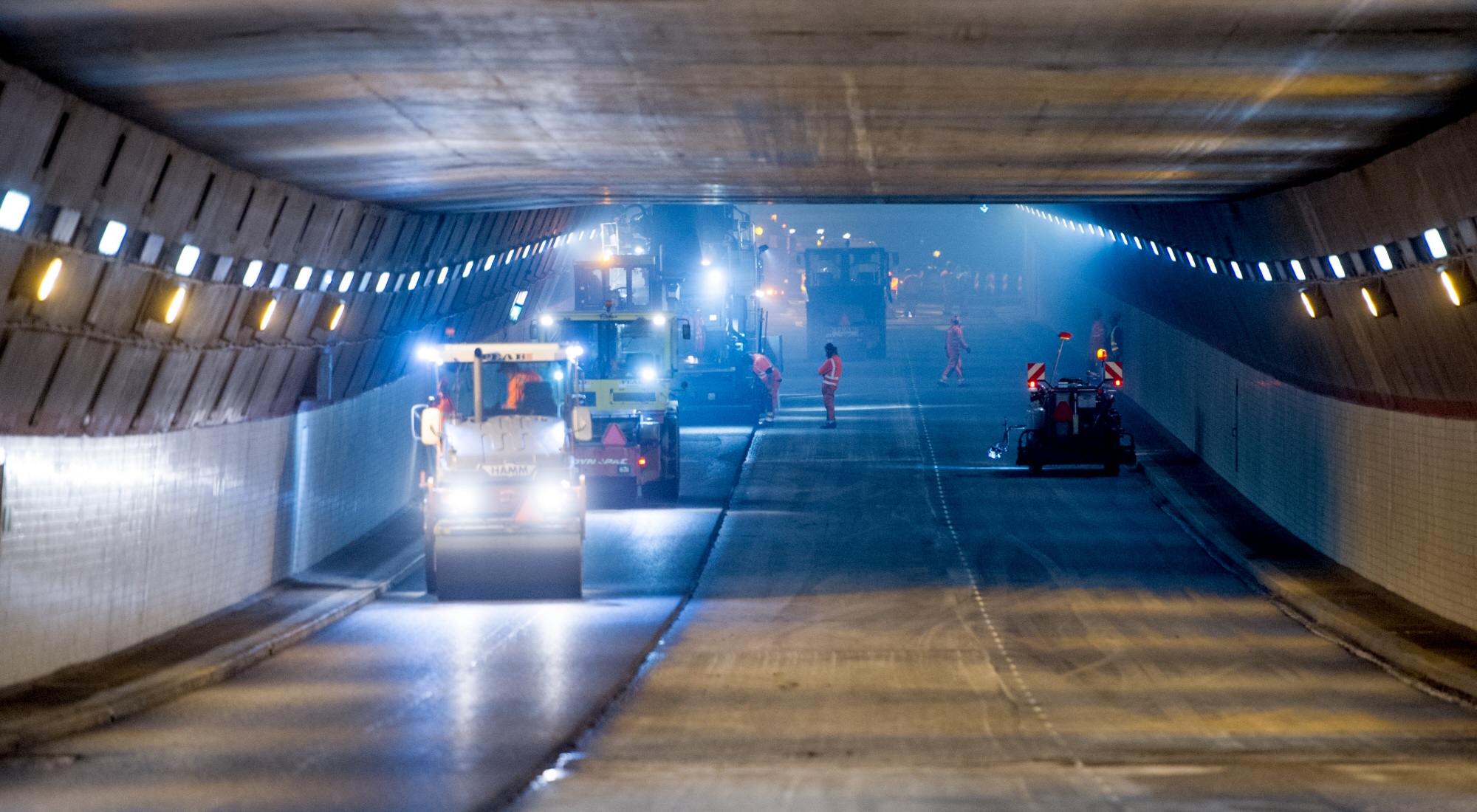Tunnel, Tingstad, Sweden
The Tingstad Tunnel under the Göta älv river consists of two sections, each with three lanes, connecting Hisingen with mainland Gothenburg. The traffic is heavy, with up to 3,500 vehicles an hour in each direction.
The Tingstad Tunnel under the Göta älv river consists of two sections, each with three lanes, connecting Hisingen with mainland Gothenburg. The traffic is heavy, with up to 3,500 vehicles an hour in each direction.
ASSIGNMENT: New surface course
CLIENT: Swedish Transport Administration
CONTRACTOR: Peab Asfalt AB
DATE: October 2015 
The Tingstad Tunnel under the Göta älv river consists of two sections, each with three lanes, connecting Hisingen with mainland Gothenburg. The traffic is heavy, with up to 3,500 vehicles an hour in each direction.
The road through the tunnel is generally protected from wind and weather, however; problems with rutting due to plastic deformation caused by slow and heavy traffic can occur. A year ago it became evident that the depth of rutting in some sections was outside the Swedish Transport Administration’s guidelines and that maintenance intervention was required. These works were carried out during the autumn of 2015.
Before the re-surfacing work started, various designs were tested for the asphalt mix to be placed. The tunnel has a low ceiling and therefore presented a logistical challenge for the contractor. This meant that the use of a standard raised tipping platform was not possible and the contractor had to use bottom emptying trucks which are of limited availability in Sweden.
In addition to a new surface course, it emerged that some sections needed structural reconstruction. After milling 40 mm of the surface course, it was therefore decided to mill a further 50 mm depth over a section of approx. 250 metres in length. This meant that there was also a requirement for a new binder course in those areas. In total, the new surfacing covered an area of around six thousand square metres.
To meet the client’s strict demands, a combination of aggregate and binder was required that was both flexible and resisted deformation. The aggregate used was quartzite, which is hard and durable, and in view of the extreme loading a highly modified binder, Nynas Endura Z3, was chosen for both binder and surface course.
Both client and contractor are very satisfied with the end result. To be able to monitor changes in the surface in the long term with regard to rutting depth and longitudinal unevenness, annual road surface measurements will be performed.
In addition to a new surface course, some sections needed structural reconstruction. After milling 40 mm of the surface course, it was therefore decided to mill a further 50 mm down over a section of approx. 250 metres in length. This meant that a new binder course would be require for those areas. In total, the new surfacing covered an area of around six thousand square metres.
To meet the client’s strict demands, a combination of aggregate and binder was required that was both flexible and resisted deformation. The aggregate used was quartzite, which is hard and durable, and in view of the extreme loading a highly modified binder, Nynas Endura Z3, was chosen for both binder and surface course.
Both client and contractor are very satisfied with the end result. To be able to monitor changes in the surface in the long term with regard to rutting depth and longitudinal unevenness, annual road surface measurements will be performed.
The Swedish Transport Administration’s general execution requirements for the Tingstad Tunnel included: